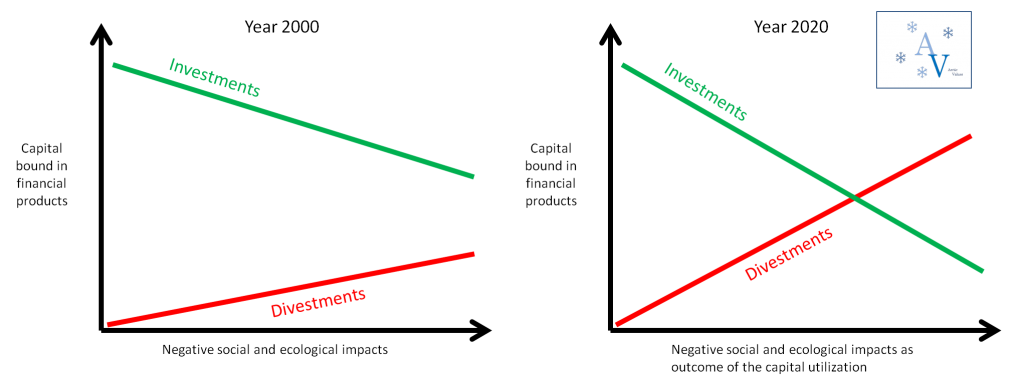by Adrian Braun
December 2019
Global movements such as climate change and sustainable development do not require only activism, dialogue, research and policy-making. In order to prevent something unwanted to happen or to realize something desirable, investments are needed. These are actually investments of all sorts of assets, time, knowledge, labour and of course capital. When it comes to financial investments into sustainability projects, we perceive lots of efforts in this regard. International investors from institutional organizations increase in the past decade their provisions of capital into socially and environmentally responsible investments (SRI´s/ ERIs). While this is exciting to follow on a daily base, it is possible to read “financial news” about green investments on many online platforms from business, academia or regular news feeds.
What does get very little attention to this date is just the other side of the coin. What about the divestments, what about the withdrawal from previously invested capital into projects and venture that harm the natural environment and the overall society to an extent that makes the investment questionable? Now it can be argued which investment is unsustainable and which investment corresponds to sustainable development? Different actors have evidently different viewpoints in this perspective! However, in recent years, more and more investors (from all scales in terms of capital amounts) withdrew capital from companies and projects that are known or had been criticised for ecological and social problems, such as, high carbon footprints, high usage of natural resources, exploitation of workers, lacking health and wellbeing of stakeholder communities.
It is obvious that profit is not the single outstanding indicator anymore. Institutional investors receive more pressure in setting up their portfolios and the small- and medium-scale investors are concerned where their capital goes to and if there are negative or positive side-effects based on their investment. This pressure has already lead to developments that fund managers made decisions to withdraw capital from enterprises linked to armery, narcotics and with high carbon footprints.
Obviously, we perceive a development of capital movements in terms of non-profit characteristics. Nowadays, the amounts of negative social and environmental impacts of an investment let the investment curve falling steeper than a decade or two decades ago and vice versa the divestment curve is rising faster these days than it has been the case in the past. The multiple discourses of climate change, human rights, health and safety play a crucial role in this perspective and it will be interesting if these discourses and possibly new discourses will increase this effect in the future.

Legal Notice / Impressum – Arctic Values – Copyright © 2022